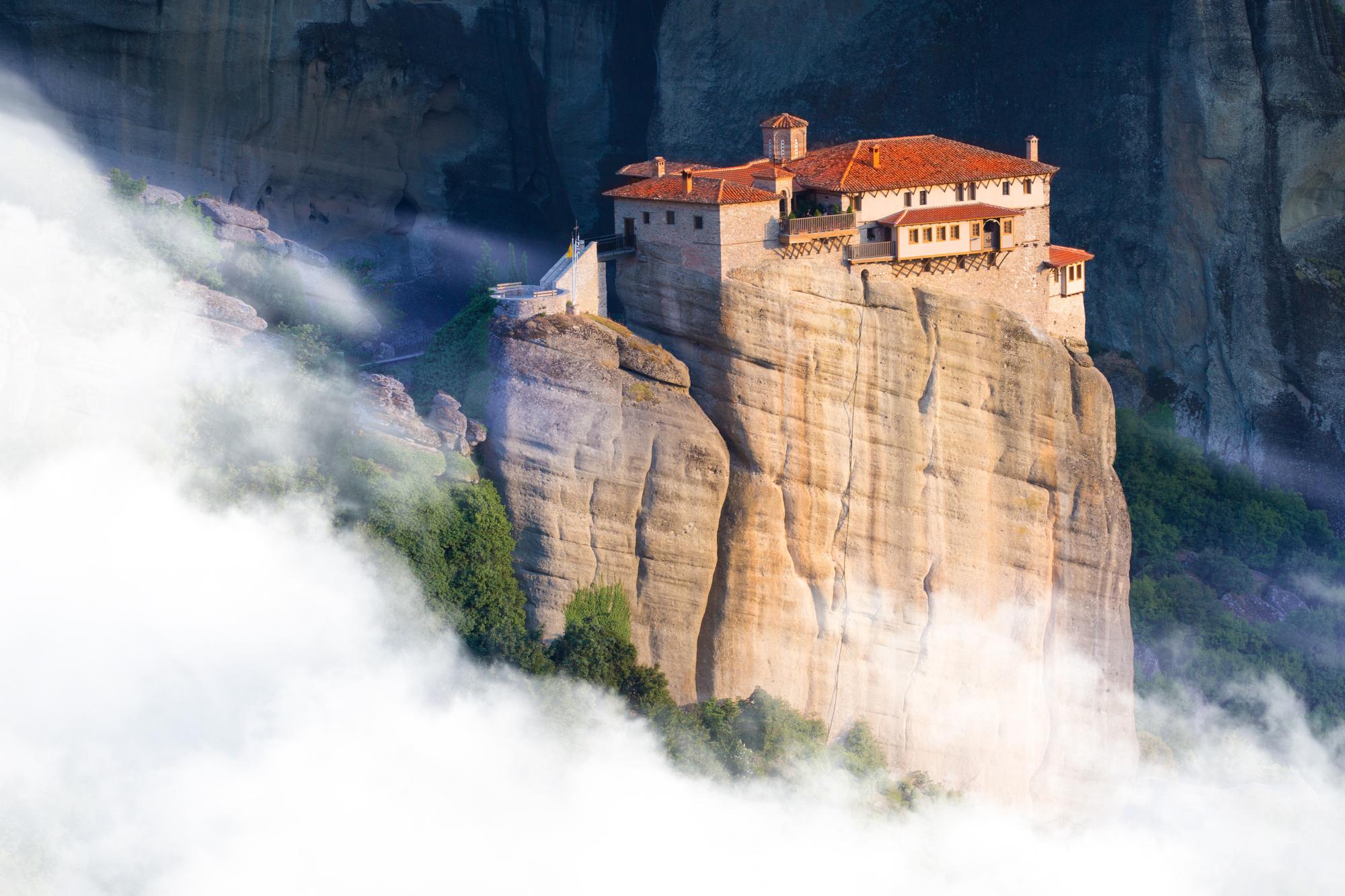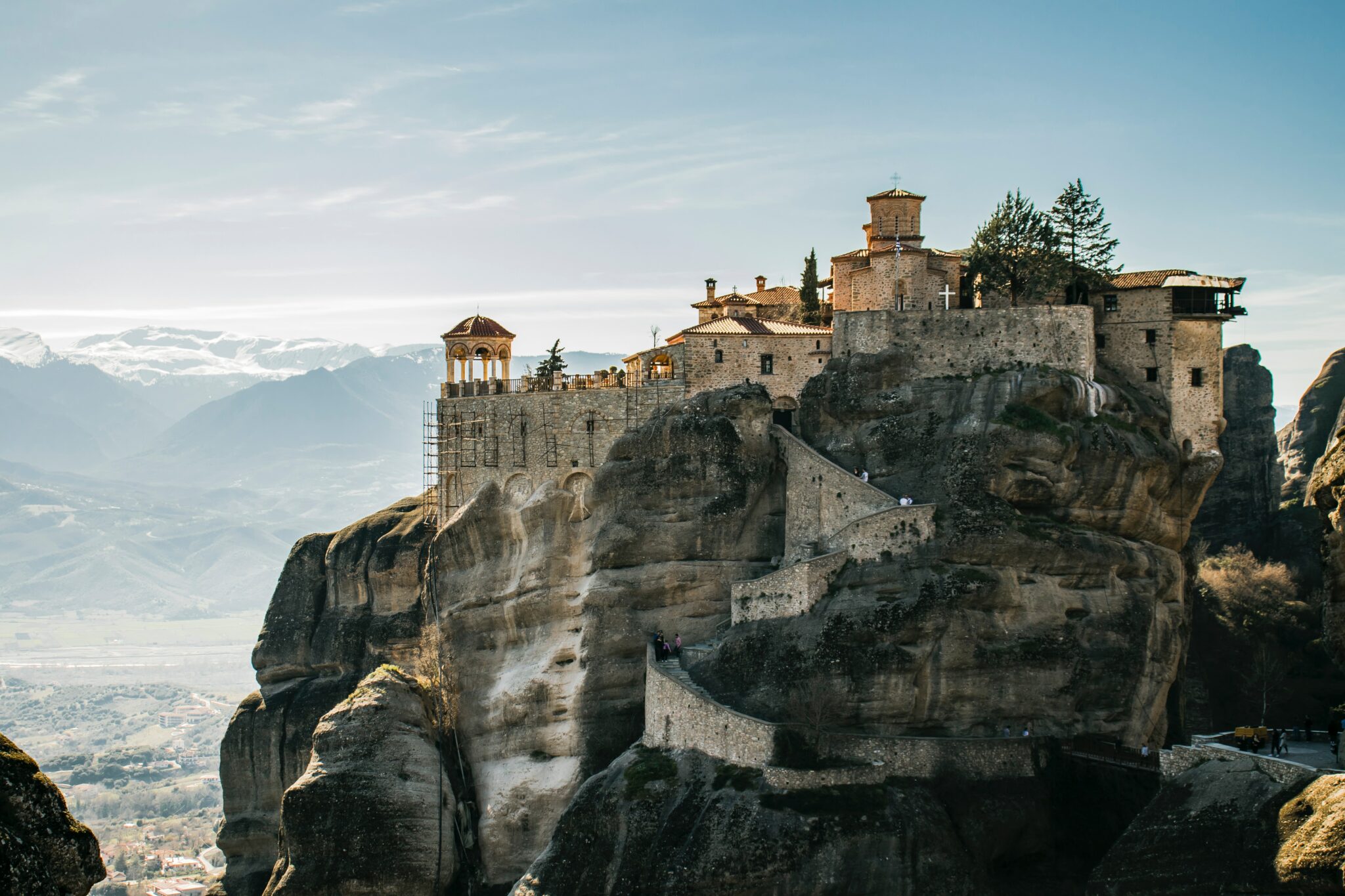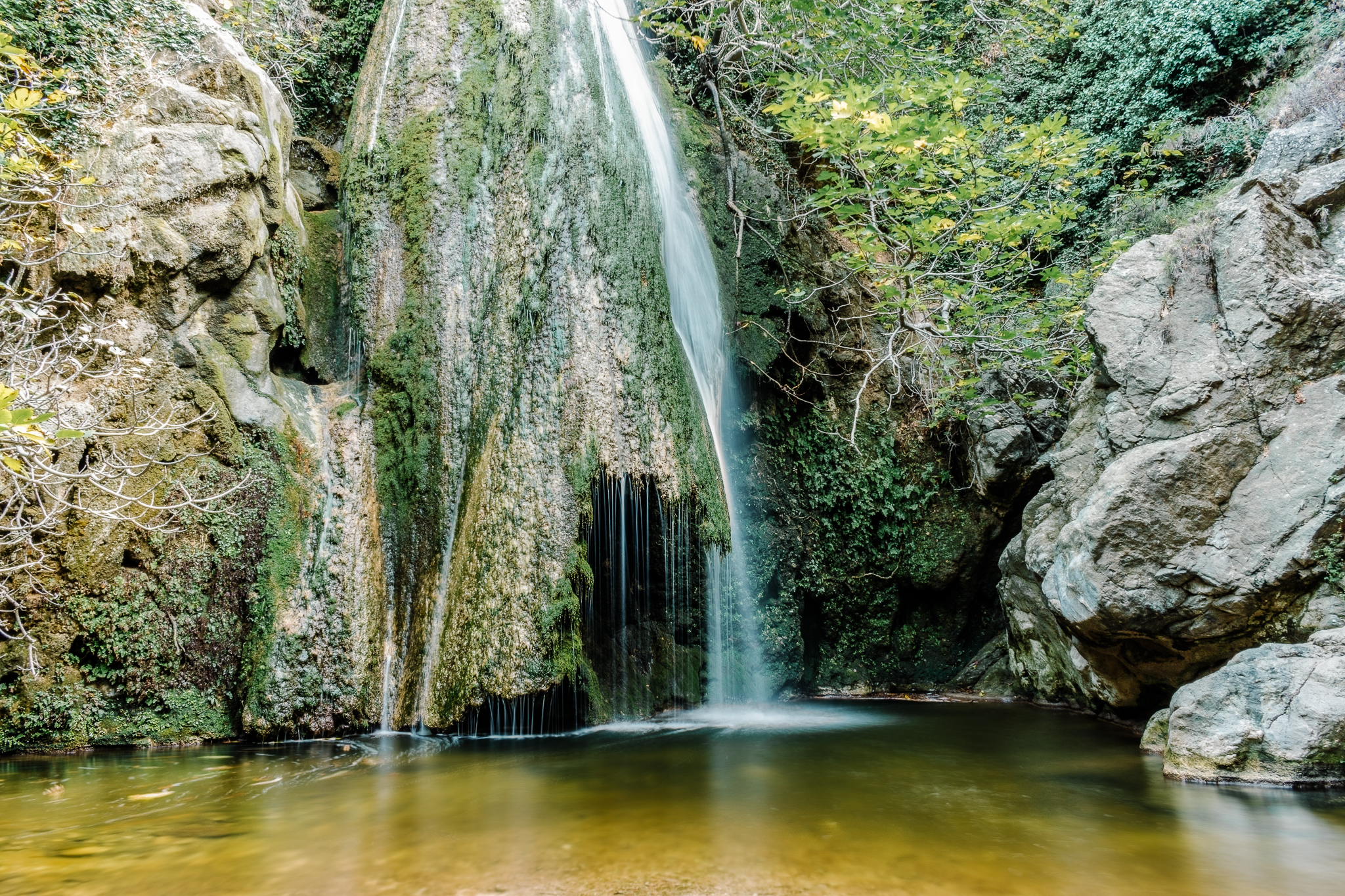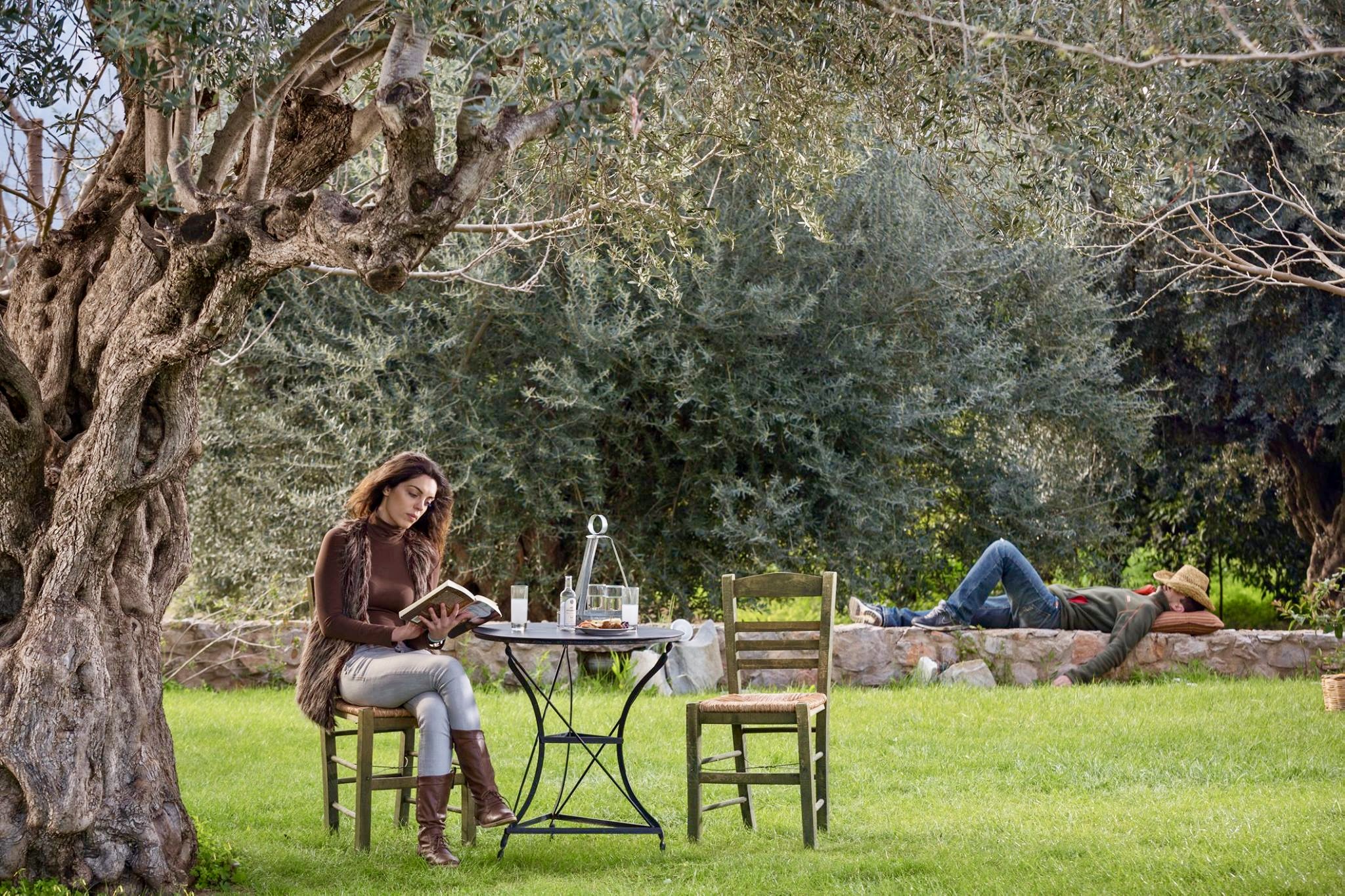Driving on the straight road that leads from Trikala to Kalabaka, your eyes are inevitably drawn to the enormous rocks. As you get closer the rocks become bigger and even from a distance it is easy to realise how majestic the setting will be when you reach Meteora.
UNESCO describes the dark vertical rocks rising over Kalabaka and Kastraki as “columns of the sky”. The monks, originally in the 11th century but mainly in the 14th century, chose this steep, almost inaccessible, and otherworldly place to live. Meteora is a protected area both as part of the Natura 2000 network and also as a UNESCO Preserved and Protected Monument of Humanity. It covers an area of about 30 km and is a unique geological phenomenon. Today six of the monasteries are open to the public, all of them impressively built on the rocks, and the Roussanou, Agios Stefanos, Megalo Meteoro, Agia Triada, Agios Nikolaos Anapafsas and Varlaam monasteries will leave you awestruck with their architecture and their rich collections of exhibits.
The region of Meteora attracts visitors from around the world throughout the year, many wanting to enjoy hiking and walking up the rocks on the old paths used by the monks, while others seek to live the unique experience of climbing on or rappelling off the steep vertical rocks of Meteora. Whatever you decide to do, it is best to go to a company organizing activities that can also supply the necessary equipment as well as an experienced guide and that will provide all the relevant safety measures.
Rappelling
The most famous rappelling spot in Meteora is the rock of Doupiani. The usual meeting point is the Vrachos camping site in Kastraki, a favourite among the climbers and rappelers, a short hike away from the rock. You need to follow the old monk path starting at the village square and hike between monasteries and old hermitages to reach Doupiani. Ideal for beginners, after you receive some training and guidance on rappeling techniques you can abseil down a 20 metres long rope.
Climbing
Meteora has dozens of climbing routes, many of which are challenging even for the most experienced climbers, and that is the reason Meteora is one of the most popular climbing destinations. Climbing in this unique landscape goes way back to the first monk that arrived in the area, the shepherds and the hunters before them, and it continued with the first foreign climbers that came to Meteora in the 1970’s and started clearing the routes. Whatever level you are at, you will be able to find a climbing route to suit your skills and offer you excitement and adrenaline.
Hiking
The area is full of trails, both easy and hard. Hiking in Meteora does not necessarily mean that you will be walking in the sun between the monasteries and the huge rocks. There are many trails that go through the forest or combine walking underneath the trees with a visit to a monastery and the amazing view of Kalabaka. The path that leads from Kastraki to the Ipapanti Monastery is a nice one, while the path from the Agios Nikolaos Anapafsas monastery to the Varlaam and the Megalo Meteoro monasteries is also beautiful.
Info: The Meteora area is 358 km from Athens and 238 from Thessaloniki. There are many local companies that offer excursions and activities like climbing, rappelling and hiking. For accommodation and food head to Kalabaka and Kastraki.
Read also:
Road trip to Meteora and the Mountains of Trikala: A Route for all Seasons
Meteora: Top hiking routes – trails, monasteries and rocks of an awe-inspiring place in Greece








